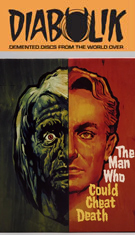



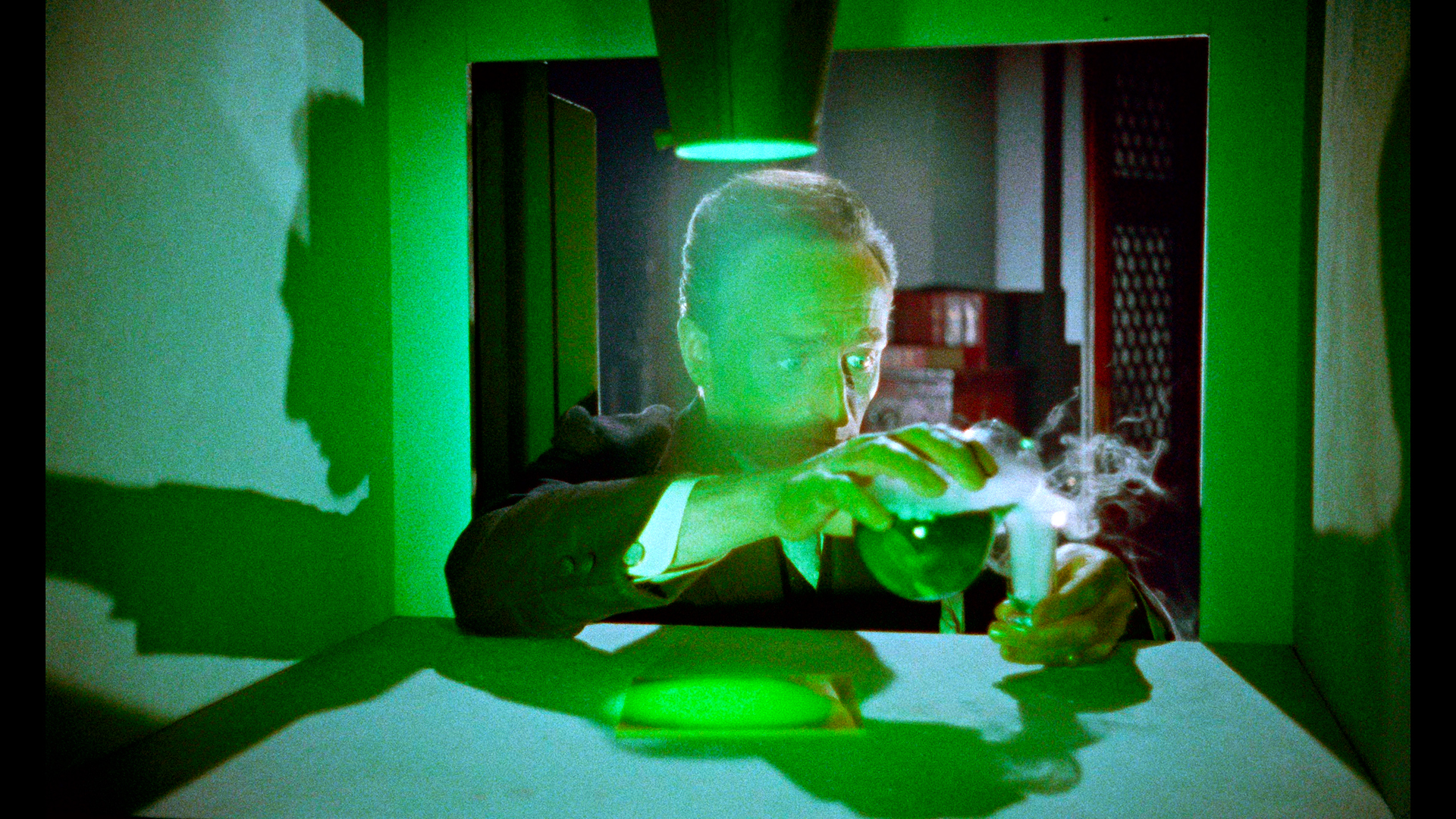 wake of Horror of Dracula and its first two Frankenstein films, Hammer Film Productions was tinkering with other
wake of Horror of Dracula and its first two Frankenstein films, Hammer Film Productions was tinkering with other 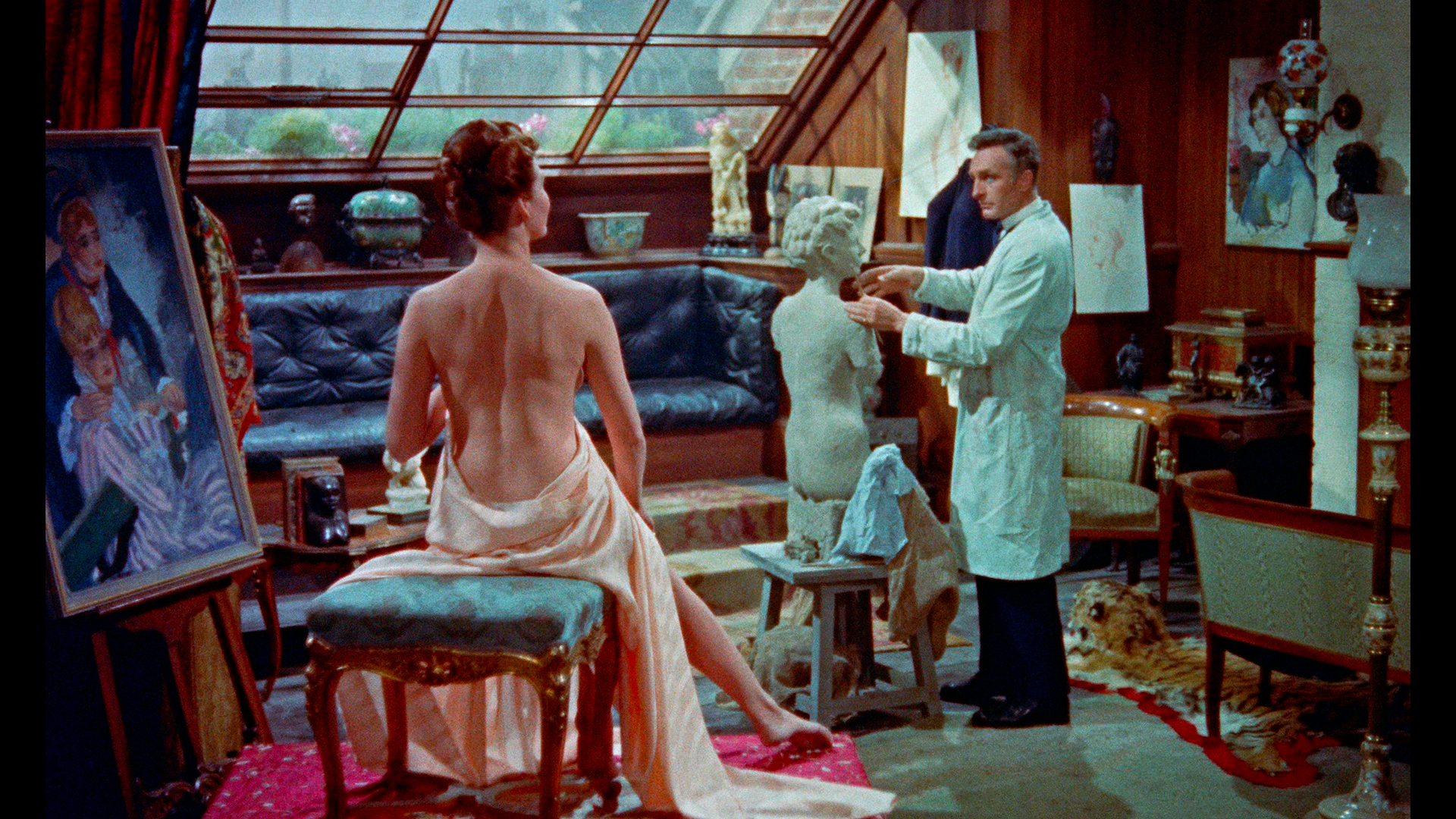 properties to adapt-- preferably with various combinations of its two biggest stars, Peter Cushing and Christopher Lee. The duo did team up for '59's The Mummy and The Hound of the Baskervilles, both solid classics from director Terence Fisher, but a third attempt that year with the same director and stars didn't prove so lucky. Intended to star Cushing in the main role, The Man Who Could Cheat Death was adapted by regular Hammer scribe Jimmy Sangster from the Barré Lyndon stage play The Man in Half Moon Street from 1939, previously filmed in 1945 for the big screen and adapted for British television (now lost) starring Anton Diffring. Essentially a blend of Dorian Gray and Dr. Jekyll / Mr. Hyde, the source material was light on gruesome material but had enough monstrous potential to fit the Hammer template. However, Cushing declined to do the film less than a week before shooting started, leaving Hammer to fill the role with Diffring instead (just before his iconic role in Circus of Horrors) to the annoyance of distributor Paramount. Though undeniably the work of Fisher and the usual brilliant team members like cinematographer Jack Asher and makeup artist Roy Ashton, The Man Who Could Cheat Death was treated like a disposable programmer at the time and stubbornly refused to turn up on home video for decades (with TV airings being few and far between as well). In more recent years it has undergone significant reappraisal
properties to adapt-- preferably with various combinations of its two biggest stars, Peter Cushing and Christopher Lee. The duo did team up for '59's The Mummy and The Hound of the Baskervilles, both solid classics from director Terence Fisher, but a third attempt that year with the same director and stars didn't prove so lucky. Intended to star Cushing in the main role, The Man Who Could Cheat Death was adapted by regular Hammer scribe Jimmy Sangster from the Barré Lyndon stage play The Man in Half Moon Street from 1939, previously filmed in 1945 for the big screen and adapted for British television (now lost) starring Anton Diffring. Essentially a blend of Dorian Gray and Dr. Jekyll / Mr. Hyde, the source material was light on gruesome material but had enough monstrous potential to fit the Hammer template. However, Cushing declined to do the film less than a week before shooting started, leaving Hammer to fill the role with Diffring instead (just before his iconic role in Circus of Horrors) to the annoyance of distributor Paramount. Though undeniably the work of Fisher and the usual brilliant team members like cinematographer Jack Asher and makeup artist Roy Ashton, The Man Who Could Cheat Death was treated like a disposable programmer at the time and stubbornly refused to turn up on home video for decades (with TV airings being few and far between as well). In more recent years it has undergone significant reappraisal 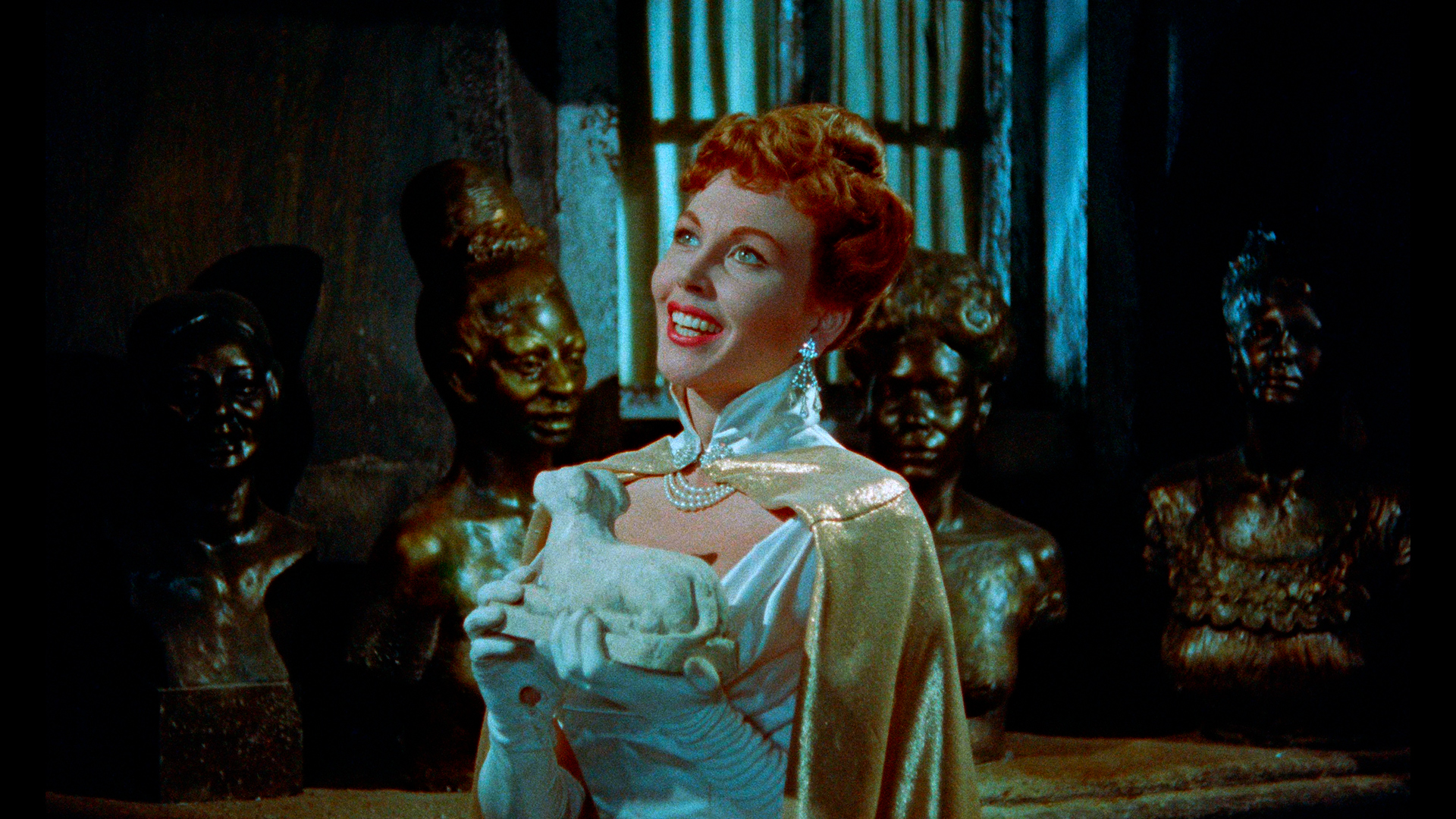 with fans enjoying the film for what it is rather than what could have been, essentially pointing the way to another frequently sidelined Fisher drawing room chiller,
with fans enjoying the film for what it is rather than what could have been, essentially pointing the way to another frequently sidelined Fisher drawing room chiller, 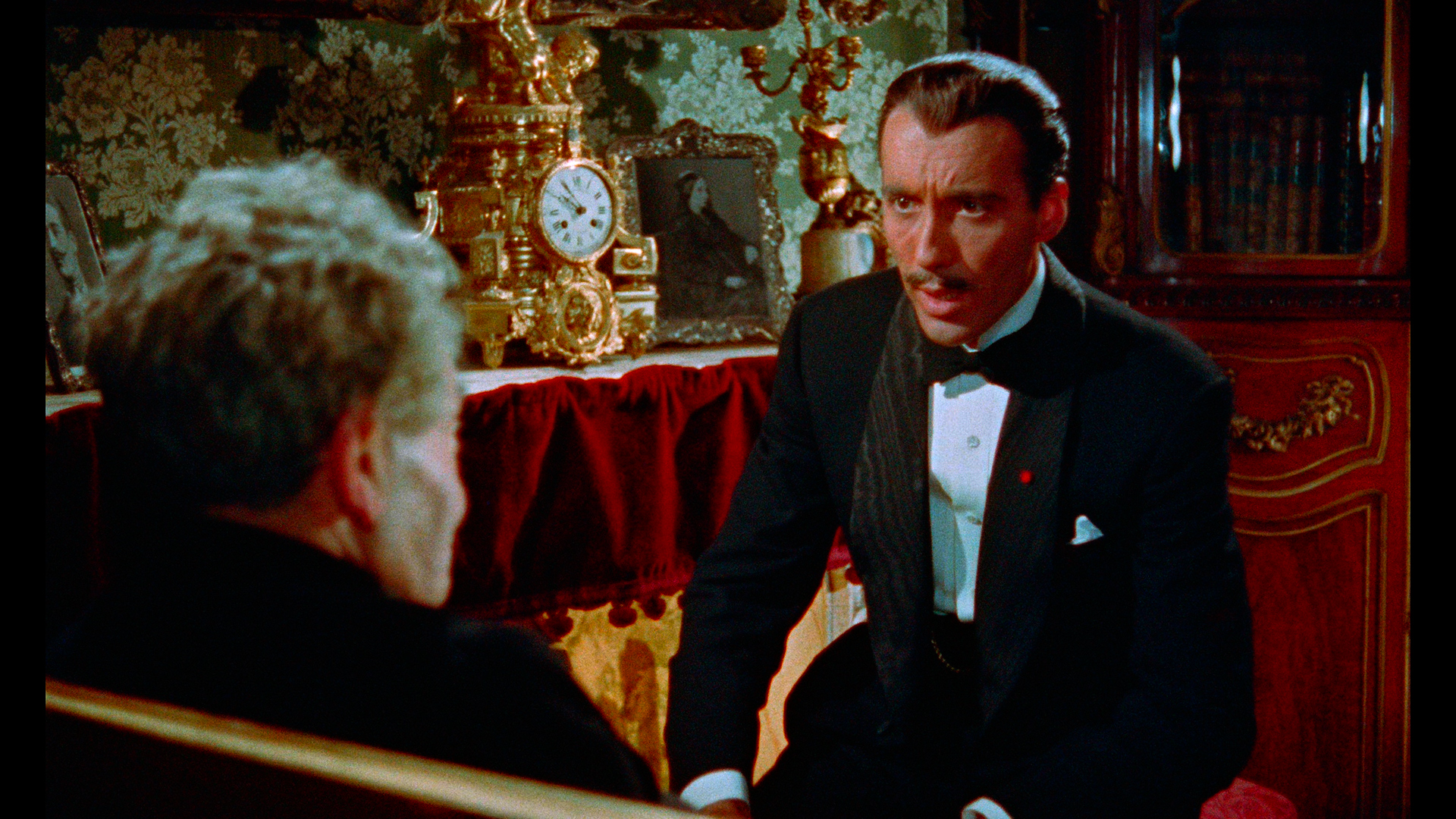 1960's The Two Faces of Dr. Jekyll.
1960's The Two Faces of Dr. Jekyll.  Court an additional fee to do an alternate topless scene while posing for a sculpture. The BBFC also insisted on some brief cuts to the fiery climax, namely reducing some trauma and screaming during the pandemonium but nothing as extreme as the
Court an additional fee to do an alternate topless scene while posing for a sculpture. The BBFC also insisted on some brief cuts to the fiery climax, namely reducing some trauma and screaming during the pandemonium but nothing as extreme as the  extended Horror of Dracula ending.
extended Horror of Dracula ending. 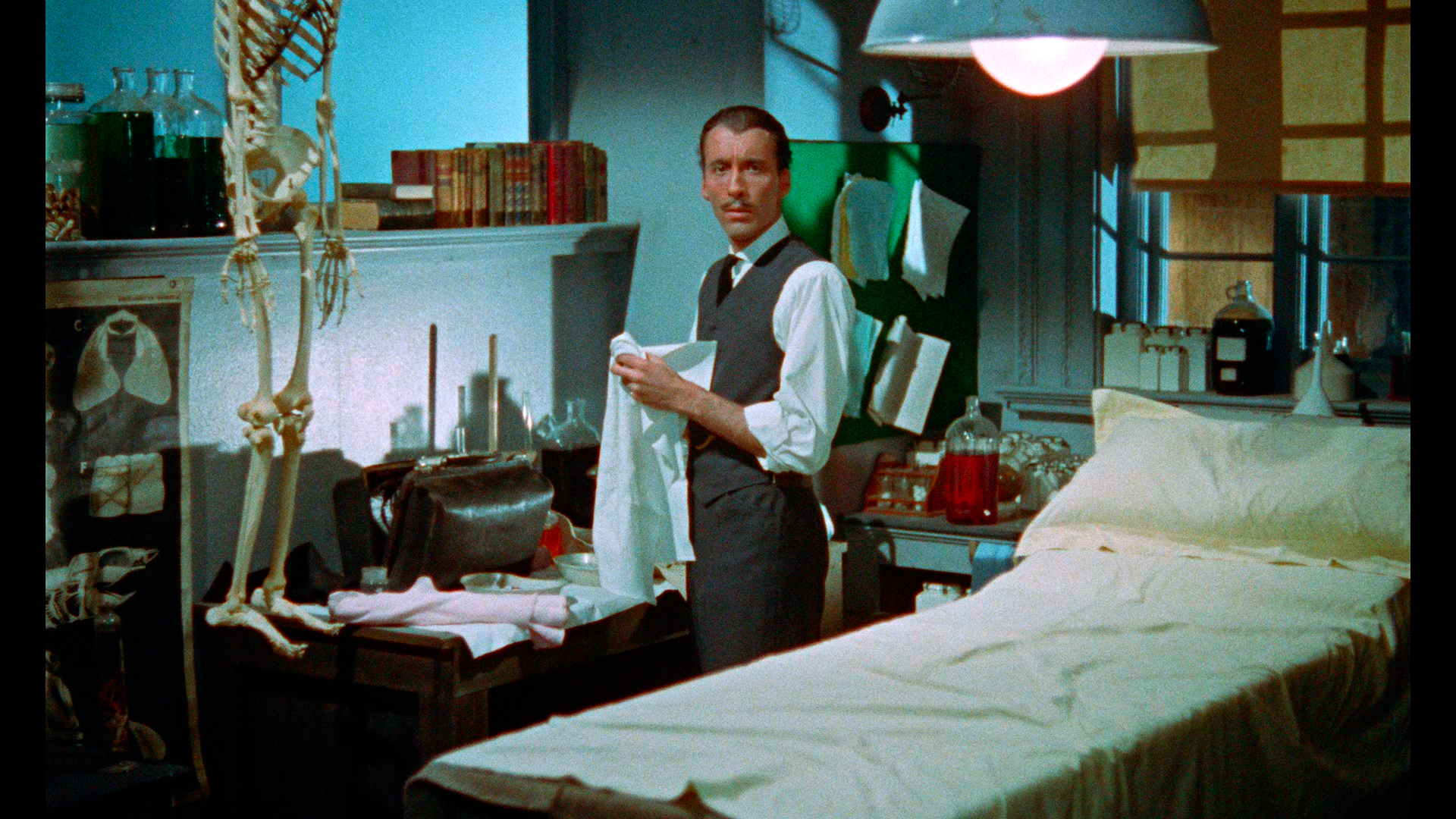 with Newman and Stephen Jones is as fun as you would hope as they cover the history of the play and its earlier screen
with Newman and Stephen Jones is as fun as you would hope as they cover the history of the play and its earlier screen 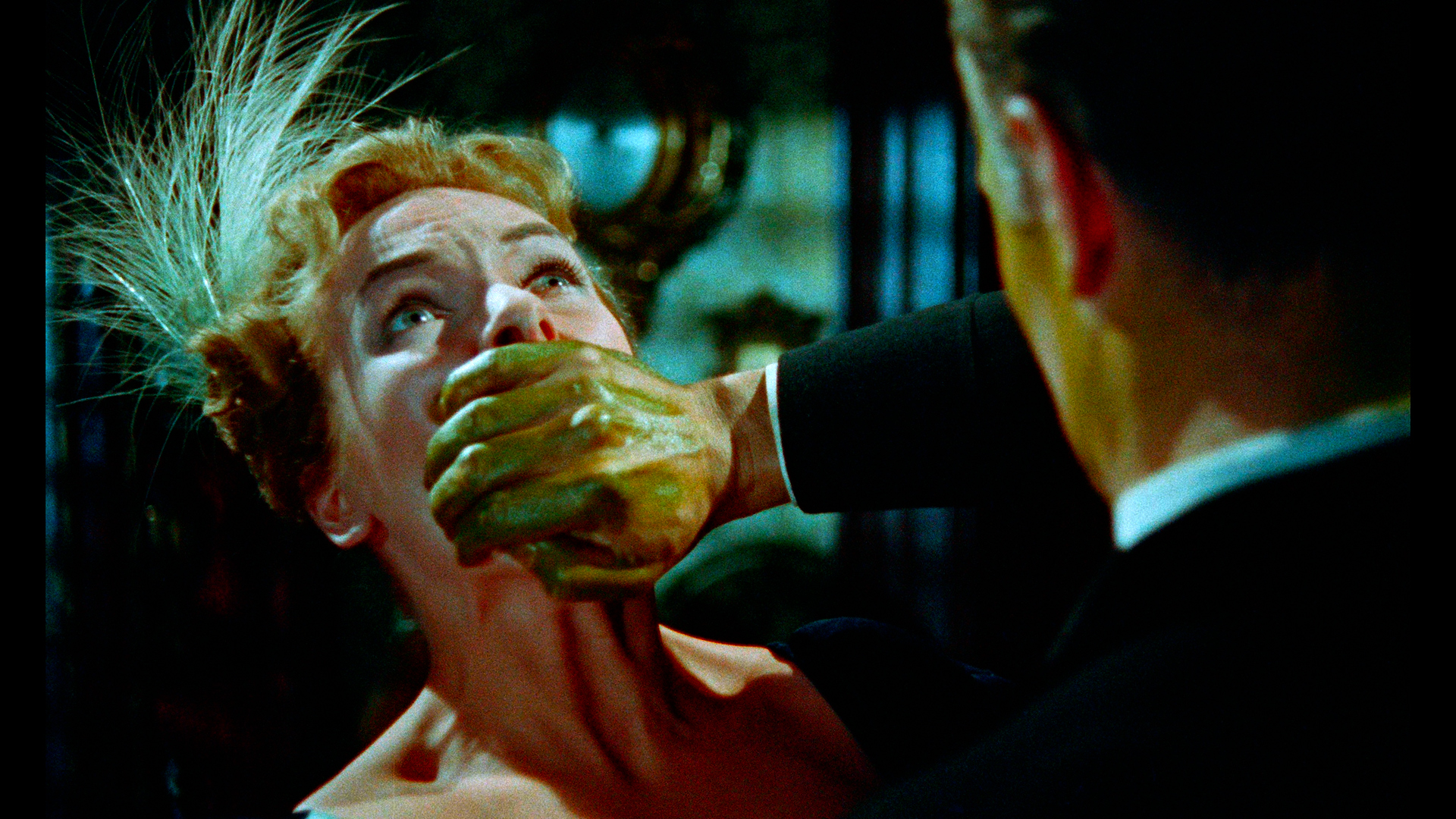 version (including the acid bath missing from this one), the whole Cushing casting mess, the state of Hammer at the time, and all of the genre connections running throughout this tale. In "The Man Who Can Chat Death" (7m25s), uncredited third assistant director Hugh Harlow talks about his time on the film, the enjoyable process of working with the cast, his positive impressions of the result, and his admiration for Fisher's directorial style and Asher's lighting. In "Court in Session" (17m8s), Melanie Williams looks at the life and career of Hazel Court including the impact Curse had on her career, the opportunities horror presented to her as a thespian (including her work for Roger Corman), and the breadth of her output including British television. In "The Man Who Could Direct Death" (24m32s), Vic Pratt chronicles the history of Terence Fisher's ascension through the film business after growing up during the silent era and his efficiency that made him a reliable professional to fit the demands of Hammer's working methods. Then you get a new, different Rigby interview "A Hideous Concoction" (26m42s), covering the sudden interest in major studios like Columbia and Paramount in teaming up with Hammer, the history of the story at the studio, the rejuvenation theme present in multiple Michael Carreras production, and social fads at the time that tie in with this and other Hammers around that time. Finally you get the one-minute censored ending if you feel like comparing, and the elaborate, quite striking packaging comes with a 40-page book with essays by Adrian Smith ("Hammer Horror in the Rue Noire"), Jon Dear ("Cheated of Death - A Conceptual Hammer Horror"), and Kieran Foster ("James Carreras: The Man Who Could Charm Hollywood"), which are all solid but tricky to read being dark red text on black paper. Definitely a must for any devoted or casual Hammer fan.
version (including the acid bath missing from this one), the whole Cushing casting mess, the state of Hammer at the time, and all of the genre connections running throughout this tale. In "The Man Who Can Chat Death" (7m25s), uncredited third assistant director Hugh Harlow talks about his time on the film, the enjoyable process of working with the cast, his positive impressions of the result, and his admiration for Fisher's directorial style and Asher's lighting. In "Court in Session" (17m8s), Melanie Williams looks at the life and career of Hazel Court including the impact Curse had on her career, the opportunities horror presented to her as a thespian (including her work for Roger Corman), and the breadth of her output including British television. In "The Man Who Could Direct Death" (24m32s), Vic Pratt chronicles the history of Terence Fisher's ascension through the film business after growing up during the silent era and his efficiency that made him a reliable professional to fit the demands of Hammer's working methods. Then you get a new, different Rigby interview "A Hideous Concoction" (26m42s), covering the sudden interest in major studios like Columbia and Paramount in teaming up with Hammer, the history of the story at the studio, the rejuvenation theme present in multiple Michael Carreras production, and social fads at the time that tie in with this and other Hammers around that time. Finally you get the one-minute censored ending if you feel like comparing, and the elaborate, quite striking packaging comes with a 40-page book with essays by Adrian Smith ("Hammer Horror in the Rue Noire"), Jon Dear ("Cheated of Death - A Conceptual Hammer Horror"), and Kieran Foster ("James Carreras: The Man Who Could Charm Hollywood"), which are all solid but tricky to read being dark red text on black paper. Definitely a must for any devoted or casual Hammer fan.![]()